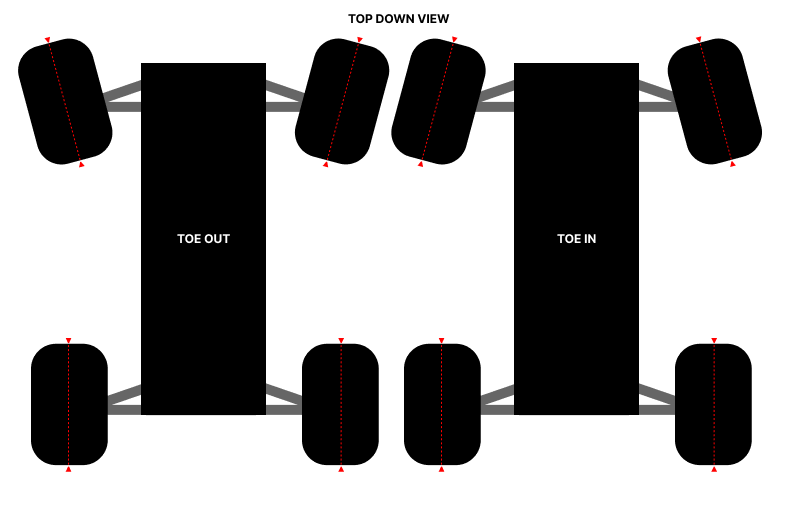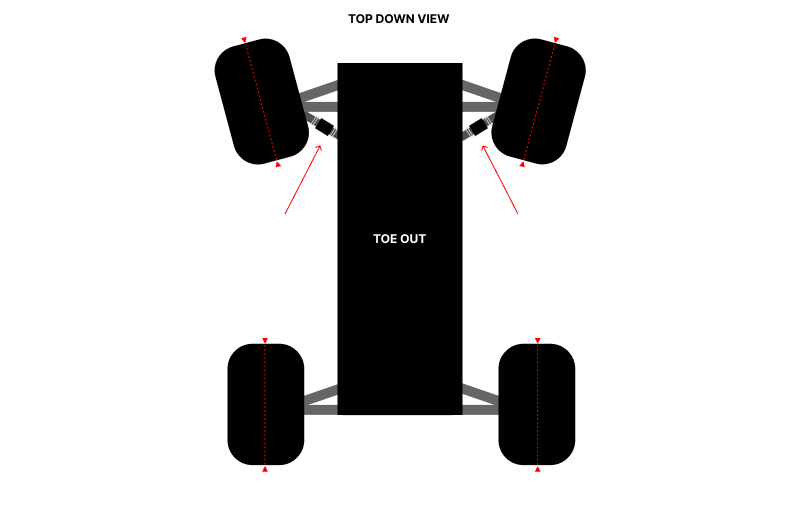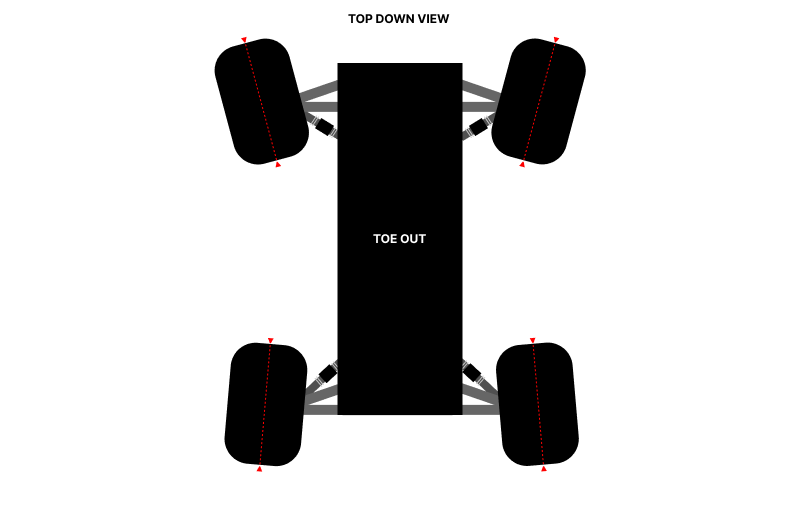Back at it again with another guide.
This time we're looking into what toe is and no I'm not talking about the things on the end of your feet yet.
Toe refers to the angle of your car's wheels relative to the centerline of the car, as viewed from above (like looking at your feet).
Now lets slide into some knowledge together.
Types of Toe:
Toe-in: The front edges of the wheels are closer together than the rear edges. Imagine your toes pointing inwards.
Toe-out: The front edges of the wheels are further apart than the rear edges. Imagine your toes pointing outwards.
How Toe Affects Handling:
Toe-in: Generally increases stability, especially at high speeds. It can make the car feel more predictable and less twitchy. However, too much toe-in can reduce steering response and make the car feel sluggish. On a drift car, a small amount of toe-in in the rear can help with straight-line stability and make initiating drifts slightly easier to control.
Toe-out: Makes the car more responsive and quicker to turn. It can make the car feel more agile and easier to initiate a drift. However, too much toe-out can make the car feel unstable and "loose," requiring more driver input to control. On a drift car, toe-out is often used in the front to enhance the car's ability to initiate and maintain drifts.

Adjusting Toe:
Most RC drift cars allow you to adjust toe using turnbuckles or adjustable links.
Below is a simple diagram where you often find the linkages to adjust your toe. Typically they will connect from your steering linkage to your wheel hubs.
Always remember to write down WHAT you started with so you can compare to previous settings:

Check your car's manual: The manual will provide specific instructions and diagrams for your model. It will also indicate where to adjust toe.
Use the force tools: You'll typically need small wrench like tool (it should come with your drift kit) or use a miniature wrench. You can get these at hardware stores.
Make small adjustments: Changing toe even slightly can significantly impact handling. Start with very small adjustments (e.g., 1/8th of a turn on the turnbuckle OR again use a ruler to measure in mm the length of the linkage) and test the car.
Test and repeat: After each adjustment, test your car on the track to see how it feels. This is the most critical step. What feels good to one driver may not feel good to another. It's all about finding what works best for you.
Keep track of your changes: It's a good idea to keep a record of your toe settings so you can easily return to a previous setup if needed.
Toe for Beginners:
For beginners, it's generally recommended to start with a slightly toe-out setup in the front and slightly toe-in in the rear. This will provide more stability while drifting and make the car easier to control while you're learning the basics of drifting.

As you become more comfortable, you can experiment with small adjustments to see how they affect the car's handling.
Remember, the key is to experiment and find what works best for your driving style.
Don't be afraid to ask other experienced drivers for advice at your local track.
They can often provide valuable insights based on their own experiences.
Let me know if this guide provided value to you by replying to the discussion!
Always happy to help.